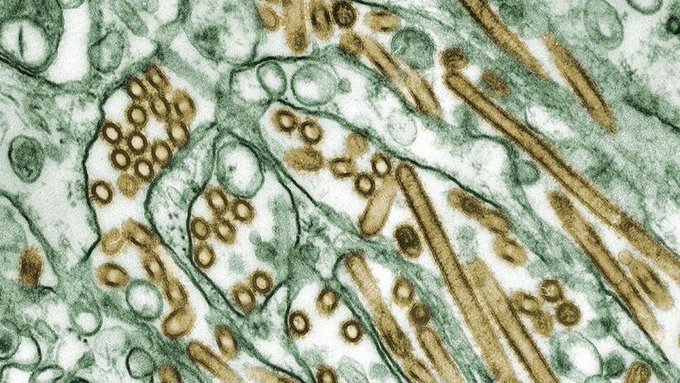Atlanta, GA – The Centers for Disease Control and Prevention (CDC) has reported mutations in the bird flu virus from the first severe human case in the United States, raising concerns about the potential for increased human transmission. This case, identified in Louisiana, marks a critical point in the ongoing surveillance of avian influenza, especially the H5N1 strain, which has been sweeping through poultry and wild birds globally.
The patient, whose identity has not been disclosed for privacy reasons, was hospitalized with severe symptoms after exposure to sick and dead birds in a backyard flock. Genetic analysis conducted by the CDC has revealed mutations in the virus that were not present in samples taken from the birds on the patient’s property, suggesting that these changes occurred during the course of the human infection.
Mutations and Their Significance
The mutations identified are centered on the hemagglutinin (HA) gene of the virus, which plays a crucial role in how the virus attaches to and enters host cells. These specific mutations have been linked in previous studies to enhancing the virus’s ability to bind to human cell receptors, potentially making human-to-human transmission more feasible.
Dr. Scott Hensley, a microbiologist specializing in influenza at the University of Pennsylvania, commented on the findings: “These mutations are concerning because they suggest the virus might be starting to adapt to better infect human cells. However, this does not mean we’re on the brink of a bird flu pandemic; it’s an indicator that we need to keep a very close watch on how this virus evolves.”
Current Public Health Risk
Despite the mutations, the CDC maintains that the risk to the general public from this outbreak remains low. No evidence has been found of the virus spreading from the Louisiana patient to others, which is reassuring but does not eliminate the need for vigilance. The CDC has emphasized that these mutations are not unprecedented, having been observed in severe cases in other countries, particularly in instances of prolonged infection or intense viral replication in the human body.
Global Context and Response
Globally, the H5N1 bird flu has been a cause for concern since the early 2000s, with sporadic human infections usually linked to direct contact with infected birds. The virus’s spread to mammals, including recent cases in dairy cows, has heightened fears of its potential to evolve into a form more transmissible among mammals, including humans.
In response to these developments, the CDC is intensifying its surveillance efforts, working closely with state health departments, and encouraging rapid reporting of any unusual poultry deaths or human illnesses that might be related to bird flu. There’s also a push for enhanced biosecurity measures on farms and in environments where humans might come into contact with infected birds or animals.
Precautionary Measures
Public health officials are advising the public, especially those in direct contact with birds, to take precautionary measures. This includes wearing protective gear, practicing good hygiene, and avoiding contact with sick or dead birds. For those in the poultry industry, strict biosecurity protocols are being reinforced to prevent further spread.
Looking Ahead
While the current case does not signal an immediate threat of a widespread outbreak, it serves as a stark reminder of the virus’s capacity to evolve. Scientists are calling for more research into the virus’s genetic changes, better vaccines for poultry, and possibly humans in high-risk areas, and an overhaul in how we monitor and respond to zoonotic diseases.
The CDC, along with international health organizations, continues to monitor the situation closely, with plans to share more data from genetic sequencing and ongoing research to better understand these mutations and their implications.
Sources:
- Reuters: “Bird flu virus shows mutations in first severe human case in US, CDC says”

